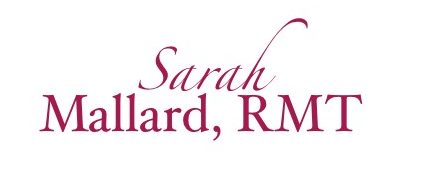- Are you experiencing upperback and neck tension? Do you suffer from regular headaches? Have you ever caught yourself slumped on the couch watching tv or staring down at your phone for hours on end?
If so, you might want to consider becoming more mindful of your posture. More aware of how your body is positioned while performing daily activites. Why not start with these 5 simple exercises?
What is proper posture and how can I tell if mine needs correcting?
While standing, imagine a straight line or rope going from the ceiling to the floor. If you were to stand behind this line with it centered to your body, it should intersect your earlobe, your shoulder joint, divide your upperbody (trunk) in two, and sit just in front/anterior to your hip, knee and ankle. This is what correct or proper posture should look like.
Posture check
1. Stand with the back of your head against a wall
2. Place heels 6inches from the wall
– making sure your buttocks and shoulder blades are touching the wall
There should be less than 2 inches between your neck or small of your back and the wall
Anything greater indicates poor posture
If you perform this check and there are more than 2 inches between your neck and wall you’re probably thinking “Yikes!!! I have horrible posture. I may end up crippled or a hunch back!”
Slow down. No need to panic.
Actually, if you take the time to observe those around you and how they line up against the invisible line you will likely see that many, many people have poor and incorrect posture.
Sometimes this can be due to an illness or disease which causes permanent structural damage, but more often than not it’s likely due to all the sitting, slumping and inactivity that seems to be a cultural norm nowadays.
![]()
So now that I know my posture can be improved, what do I do?
Let’s get technical for a moment.
The two most common postural imbalances are called hyperkyphosis and hyperlordosis.
Hyperkyphosis – any excessive curve of the thoracic spine (upper back)
This postural imbalance leads to the “head forward” posture that accompanies hunched or rounded shoulders
The reason you may suffer headaches and upperback and neck pain/tension is because the muscles of your chest are often tight and short, constantly pulling your shoulders into that forward position
This lengthens out and weakens the muscles in your upper back and the back of your neck (causing the headaches and often triggerpoints in these muscles)
Hyperlordosis – an exaggerated inward curve of the spine in your lumbar spine (lower back)
If you have ever had a sore low back or painful back spasms, this postural imbalance affecting the low back may well be the culprit
The muscle responsible for flexing/bending your hip (rasing your thigh) is called the Psoas Major muscle. It is attatched to the inside of your lower back and intersects your pelvis coming out at the top of your hip joint
This muscle is often tight and strong due to all the sitting we do (hips are constantly in a bent or flexed position) and is often shortened and tight in anyone who jogs or runs – which in turn lengthens out and weakens our abdominal muscles
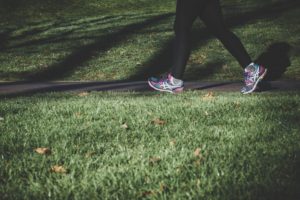
But there is hope! By setting aside just a few minutes each day, you can greatly improve your posture by restoring the proper balance to the muscles involved by:
Stretching out your chest muscles
Stretching and Strengthening neck muscles
Strengthening the muscles in your upperback
Stretching your hip flexors
Strengthening the abdominal muscles
1. Stretch Chest Muscles
Corner Stretch
- Stand approximately two feet back from the corner, facing into the corner.
- Step forward into a lunge with one foot while lifting your arms to approx 90 degrees.
- Forearms are placed on each wall, and elbows are a little below shoulder height
- Lean in as far as possible without pain. You will feel a stretch in the front of the shoulders and chest
- Hold the stretch for about 1 minute
- Rest and repeat
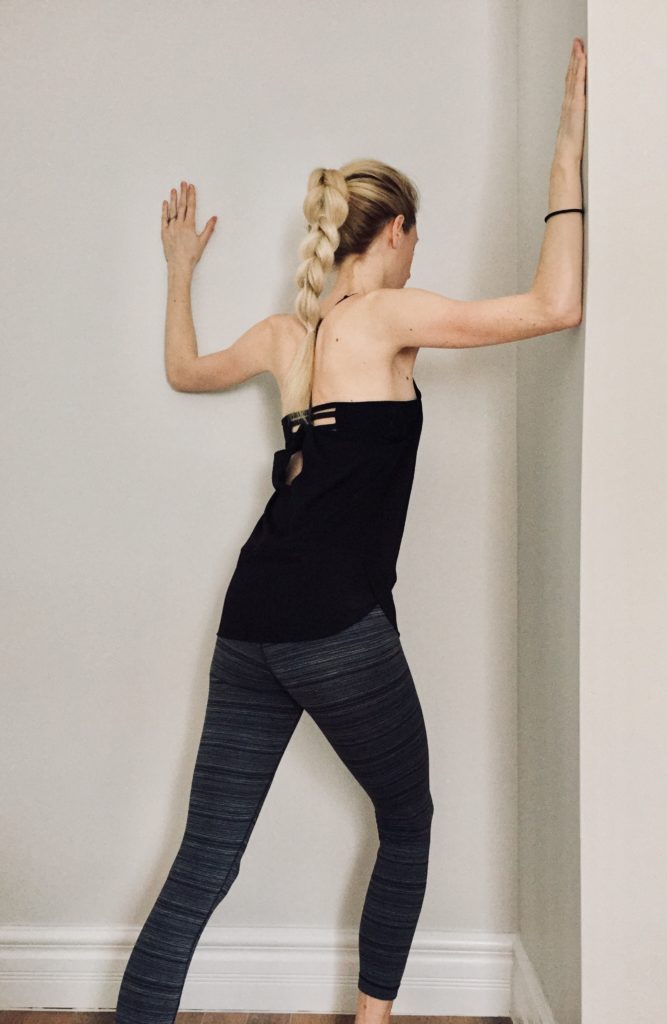
Door frame stretch
This stretch can also be done while standing in a door frame:
- Stand in a door frame push your arms out to your sides, placing your forearms against the frame
- Make sure your elbows are at a 90-degree angle with your shoulders
- Slowly walk forward until you feel a light stretch in the chest and shoulders
- Hold this stretch for 1 minute, and return to starting position
- Rest and repeat
2. Strengthen Mid and Upperback muscles
- Lie face down on a exercise mat or carpet
- Hold arms straight out at 90 degree angle to your shoulders
- Make a fist with each hand, turn so thumbs are touching the floor
- Squeeze shoulder blades together to lift arms off floor
- Hold for 1 second
- Slowly release tension back to lower arms down to floor
- Repeat 8 times
*Repeat this same exercise but with “thumbs up” to target upperback muscles
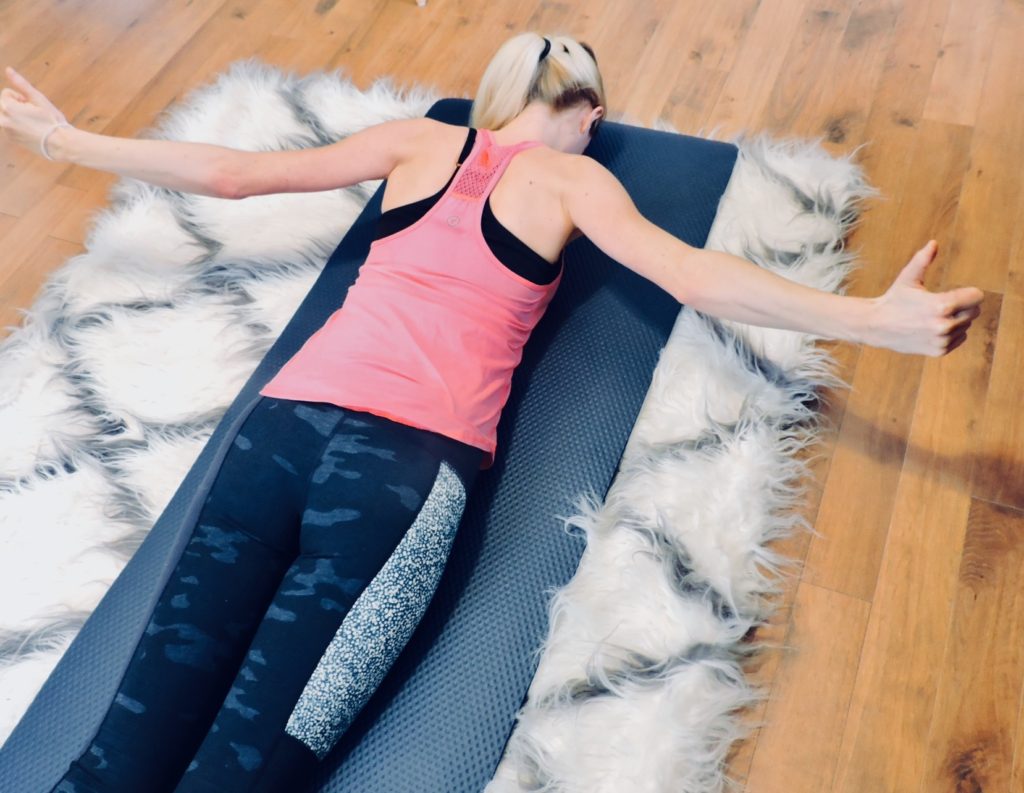
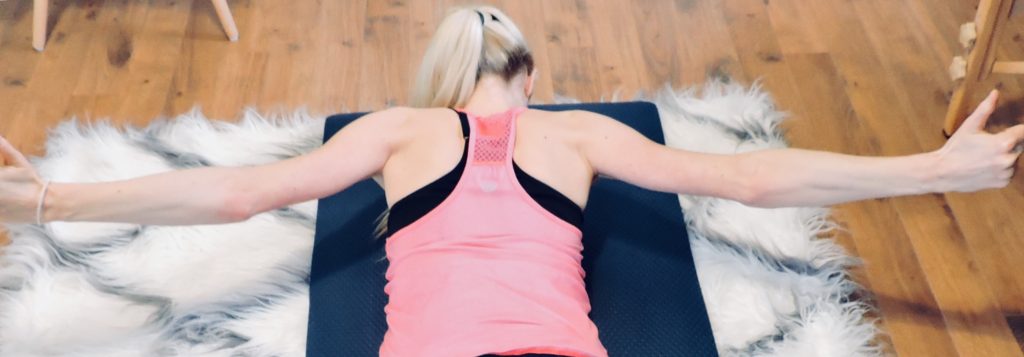
3. Strengthen and Stretch Neck Muscles
Chin Tuck
- Sit in a chair with your back firmly supported by the back of the chair
- Make sure you are looking straight ahead and the underside of your chin is level with the floor
- Slowly move your chin back and slightly down so your ears are in line with your shoulders and you feel a stretch in the back of your neck (you can place your fingertips on chin to gently assist with stretch)
- Hold for 10 seconds and release
- Repeat up to 1o times
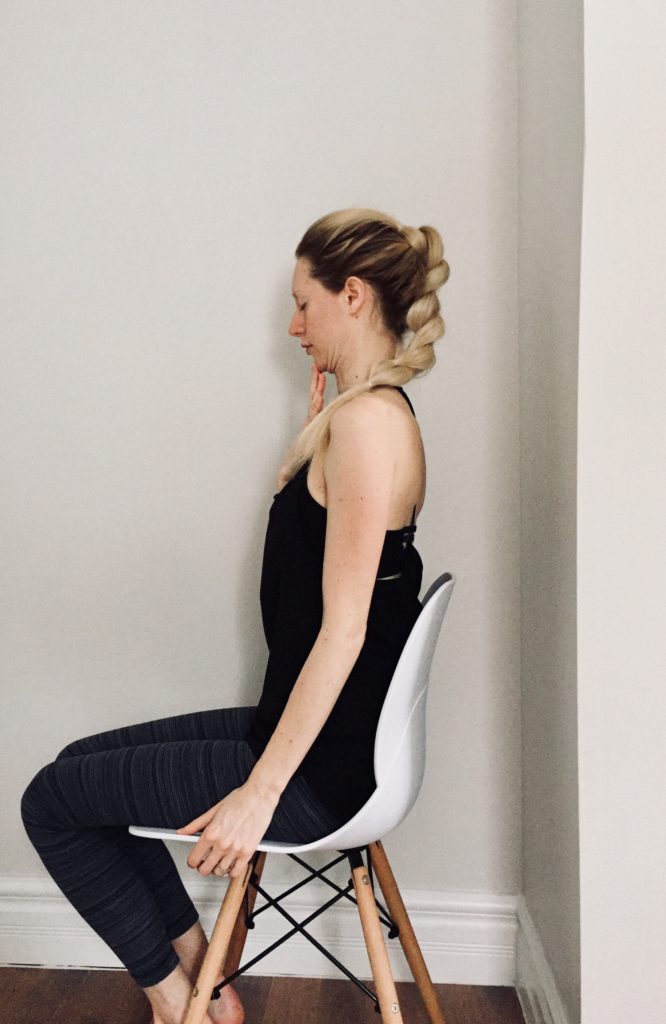
*You can perform this exercise on the go if you are experiencing neck pain and tension (just make sure you are sitting up nice and straight!)
4. Stretch Hip Flexor Muscles
- Stand up nice and straight with feet hip width apart
- Step one foot forward (approx 2ft) in front into a lunge poition
- Make sure knee of the forward leg does not travel over ankle joint
- Turn back foot out approx 30 degrees
- Place hands on hips and imagine “curling” your tail bone up towards your belly
- You should feel a stretch along the top of the hip/leg of the back leg
- Hold for 45 secs – 1 min
- Repeat for opposite Hip
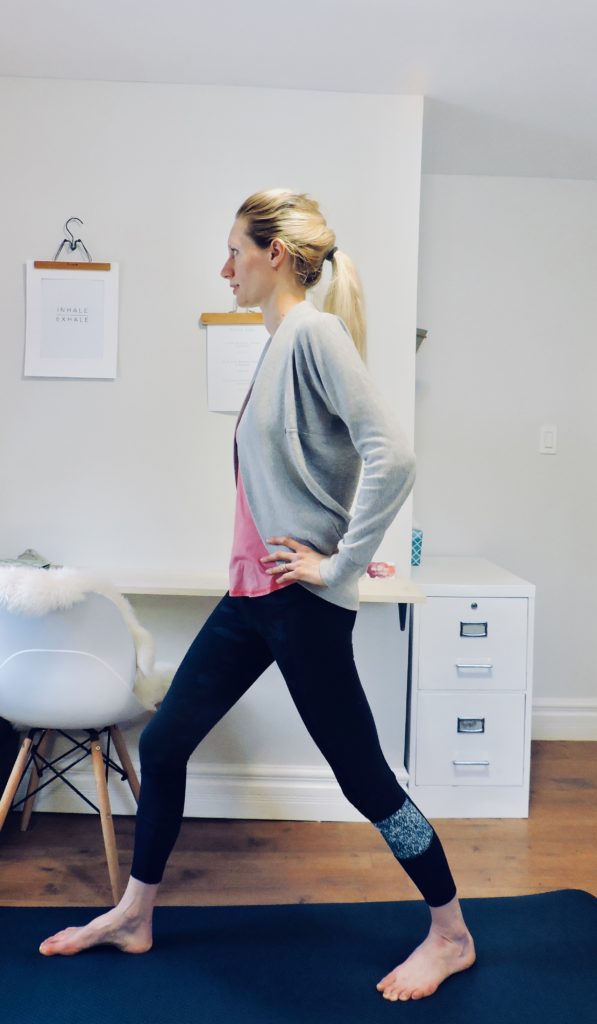
5. Strengthen Abdominal/Core Muscles
*There are sooo many excercies out there that target the abdominals and core! I’m just giving you the one that I find to be the most effective at strengthening your entire core, allows for modification and doesn’t further tighten up those hip flexors (ie a leg raise/reverse crunch).
Forearm Plank
- Begin lying on the floor with your forearms flat on the floor
- Make sure that your elbows are aligned directly under your shoulders
- Engage your core by drawing belly up towards your spine
- Raise your body up off the floor onto your toes
- Keep your forearms on the floor and your body in a straight line from head to feet
- Keep your abdominals engaged and try not to let your hips rise or drop
- *If this is too difficult, start on your knees and progress to toes as you get stronger
- Hold for 20-30secs
- Lower and rest for 30secs
- Repeat 2 more times
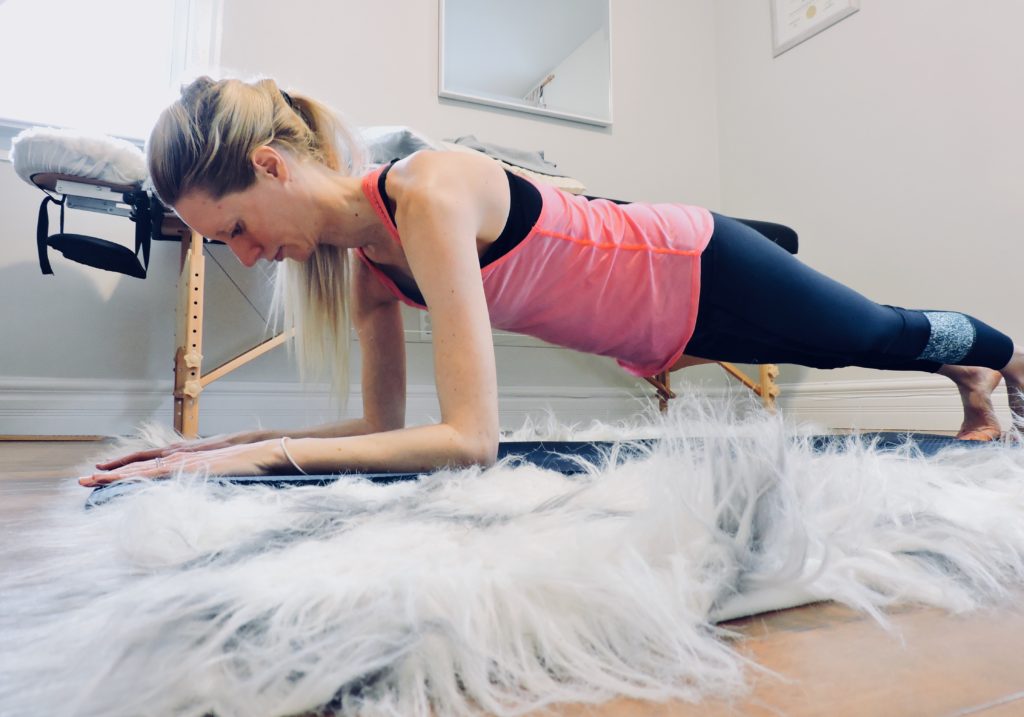
Check it out!
If you commit to these exercises daily you will likely see a major decrease in the amount of upperback, lowerback, neck pain and headaches you were experiencing due to the fact that the muscles responsible are no longer being put under constant strain!
As you work at these stretches you will start to feel more flexible and relaxed throughout your day as you are lengthing out muscles that most likely were super tight for years due to poor posture!
And as an extra added bonus you will start to feel stronger and be able to gain strength more efficiently now that your core is in top shape, posture is A+ and proper form will be much easier to achieve when working out!
Thanks for joining!
Sarah
If you have any questions or comments feel free to drop me a line in the comments below!
Massage Therapy can also help improve posture by treating all these muscles we just discussed…and more. You can follow this link to head directly to the Apppointments page.
Also feel free to share on whatever social platforms you frequent 🙂
